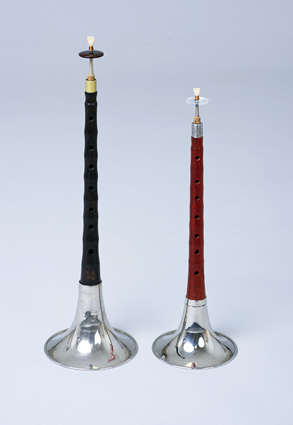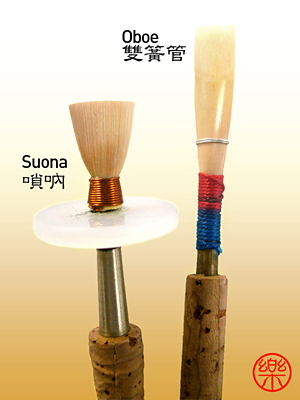Pudgy Pigsy, wacky Monk Ji Gong, and the ever-lovable Little Monks have left Shen Yun audiences chuckling in their seats season after season. Whenever these characters are up to their antics, there is one instrument you’re almost sure to hear—the exuberant suona.

Sometimes called “Chinese trumpet,” the suona originates from traditional Chinese folk music and is essential at weddings and theatric performances. In ancient China, it could even be found in palace rituals. Though small, the suona produces a powerful sound thanks to its short pipe shaft. Its clear, resonant timbre instantly captures the audience’s attention.
To get to know the quirky suona better, we sat down with Shen Yun’s suona player Jung-wen Tsai, and asked him how it compares to more familiar instruments.
Here's what he had to say:
Suona vs. Trumpet
"Both these instruments have extroverted personalities, and are suited for depicting jubilant moods and grand occasions. The suona’s unyielding volume is an asset for outdoor performance, so like the trumpet, it has long been part of marching bands.
Although the two have comparable tone color, their inner works are quite different. Western brass instruments produce sound by the player’s lips vibrating into the mouthpiece. As a member of the woodwind family, the suona actually depends on the vibration of the reed.

Suona vs. Oboe
The suona and oboe are both double-reed woodwind instruments, but they too have their distinctions. You can picture a suona reed as a flattened drinking straw. To make an oboe reed, however, the cane is spliced, folded, and then bound together. Basically, two pieces instead of one.
And although suona and oboe reeds are both cut from the upper half of the cane stalk instead of the bottom, like clarinet and saxophone reeds, the oboe reed comes from the outer layer of the plant, while the suona reed comes from the inner stalk.
The suona requires high-level precision, because it has a short reed that is very sensitive, It’s easy to go off-key and can be quite daunting for beginner musicians.
Suona’s Expressiveness
Its instability is a defining feature. The suona is able to imitate many animal sounds and even human speech.
In the famous suona solo Hundreds Birds Worshipping the Phoenix, the suona creates the effect of a bird cawing.
Some folk performers use the suona to emulate opera singing or the sound of laughter. It’s the ideal instrument for portraying humorous characters or livening up a festive scene.
A Fusion of East and West
The suona is not only a colorful soloist, but also a lead instrument that harmonizes with the rest of the orchestra.
The Shen Yun Orchestra integrates traditional Chinese instruments like the suona, erhu, and pipa into the Western orchestra. While other orchestras that have tried to do this sound mismatched, Shen Yun is able to highlight the instruments’ unique ethnic flavor, and at the same time, our orchestra remains a melodious and integrated entity.
The suona is one of those traditional instruments that has found its home inside the unique Shen Yun Orchestra. And there’s no other instrument that adds such a dash of flair. So the next time Pigsy is scrambling after a damsel in distress, or when Ji Gong is pranking an odious villain, make sure to tune your ears and listen for the playful Chinese trumpet!"
September 17, 2012

